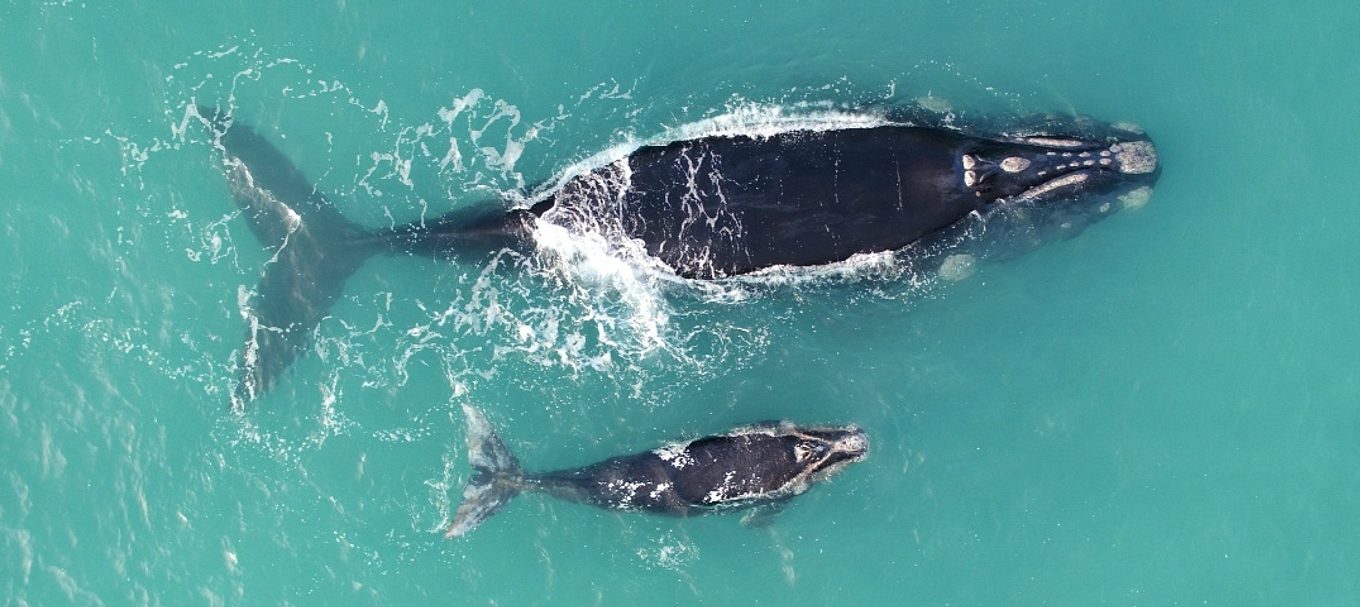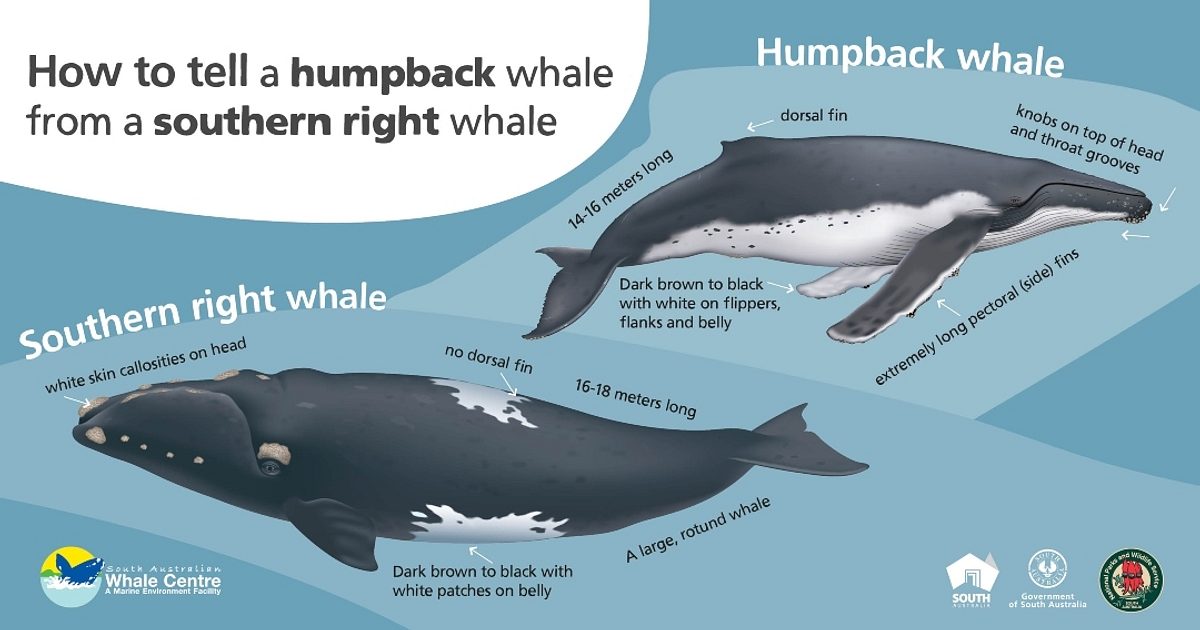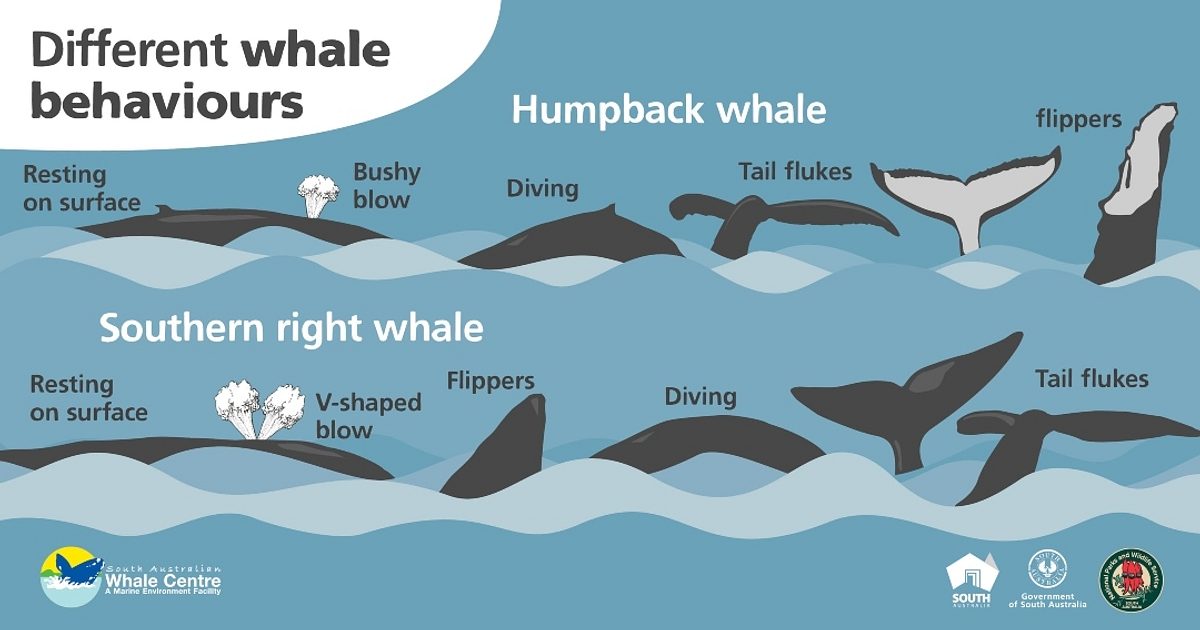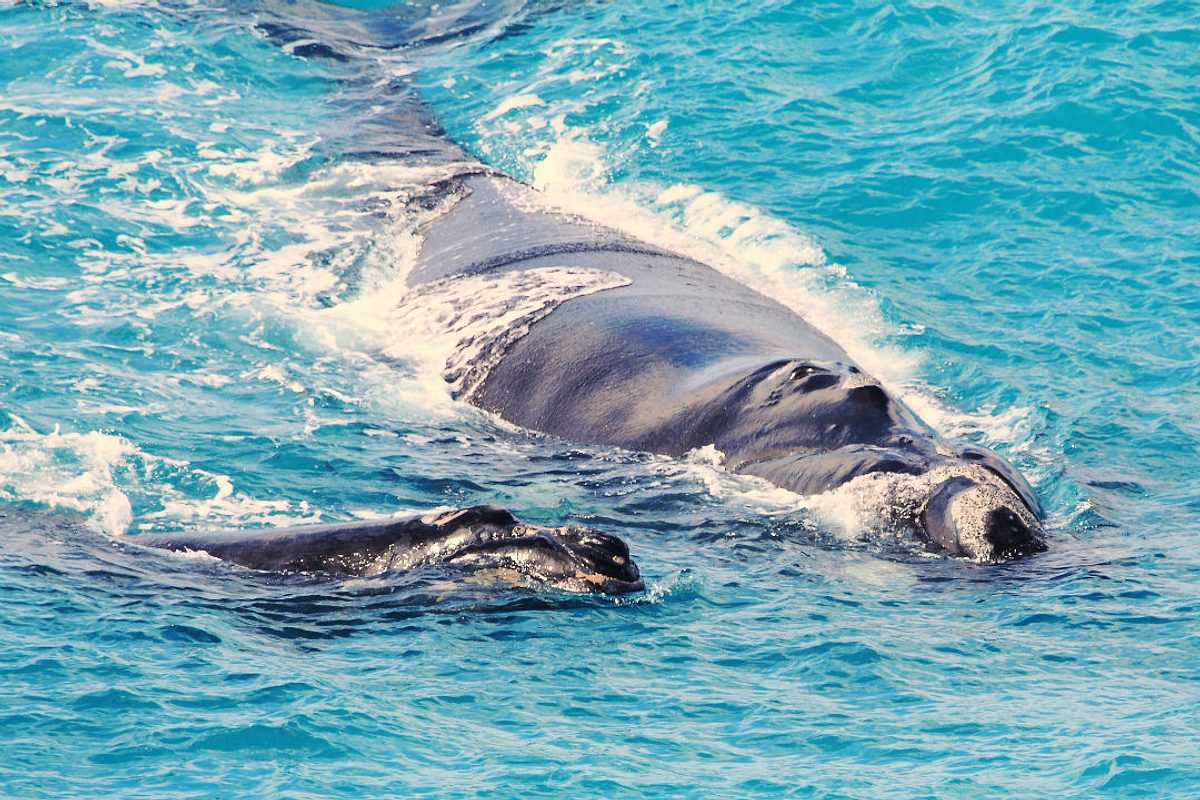
Top spots for whale-watching in South Australia
02 May 2024 9 min read
Learn all about the whales that visit South Australian shores and where, when and how to spot these magnificent creatures.
Grab your binoculars, because whale watching season starts this time of year. To help you spot one, here’s all you need to know.
When is the best time to spot whales in South Australia?
The annual migration of southern right and humpback whales to SA waters occurs during the cooler months. Generally, SA whale migration starts in May and finishes in October, with frequent sightings of these giants of the deep occurring between June and September. During this time, southern right whales mate, give birth and nurse their young.
What types of whales are found in South Australia?
The most commonly sighted whales in SA are the southern right whales and humpback whales, which grace the coastline of South Australia each year from May to October.
Toothed whales such as sperm whales, pilot whales and orcas are around, but are usually found further offshore. The world’s largest animal, the blue whale, feeds offshore in the upwelling zones near Kangaroo Island and the Bonney Coast.
How to tell different whale species apart

It’s not just physical characteristics that can identify a species. Whale species behave differently and you can tell one from the other by their behaviours.

Where to spot whales in South Australia?
Whales visit the entire length of South Australia’s coastline, making our state a whale-watching paradise with an endless choice of scenery.
Spot 1: Encounter Marine Park, Victor Harbour
Encounter Marine Park offers some of the best whale watching locations in South Australia. From mid-May to September, southern right whales migrate from their Antarctic feeding grounds to mate and give birth along the coast of southern Australia.
Basham’s Beach is popular with female whales and their calves. With such close proximity to the shore, it is fast becoming the best spot to see whales in Encounter Bay. If you choose to visit Victor Harbor, remember to stop in at the SA Whale Centre for a whale fact warm-up before you get started.

Last year, Far West Senior Ranger Rob Sleep shared a few prime locations on the Far West Coast and Eyre Peninsula to go whale watching.
Spot 2: Head of the Bight, Nullarbor
A road-trip worthy 12-hour drive from Adelaide, the Head of the Bight’s high cliff-line provides fantastic views for land-based whale-watchers.
The Head of Bight Whale Watching Centre, located within the Yalata Indigenous Protected Area approximately 20km south-east of Nullarbor Roadhouse, is well worth a visit. As well as providing information about the types of whales to look for, and interesting facts such as their behaviours, and the types of food they enjoy, the whale watching centre has lunch facilities and a toilet, making it a great spot to pop into.
It has a wheelchair accessible boardwalk leading you safely to the shoreline to witness the spectacular southern right whales and their calves. When standing on the boardwalk, you’re looking out over the Far West Coast Marine Park, which links to the offshore Great Australian Bight Marine Park. August is the peak season to see whales at this spot, with up to 300 whales spotted in the busier years, and 160 in the quieter ones.
Spot 3: Fowlers Bay Conservation Park
Another spot to visit on your whale-watching journey on the EP and Far West is Fowlers Bay Conservation Park and the Nuyts Archipelago Marine Park. The sleepy seaside township of Fowlers Bay lies approximately 1.5 hours, or 160 km, west of Ceduna, with a very small population of 20 people calling it home.
Once a whaling hub, the bay now provides a sanctuary for whales to calf after their long journey up from the Antarctic. Head to Point Fowler where you can find a ruined lookout and whale bones, which are evidence of the area’s whaling history.
You might spot southern right whales at this spot, otherwise try Scott’s Point and Mexican Hat, within Fowlers Bay Conservation Park.

Spot 4: Sleaford Bay
Another spot not to miss is further south, at Sleaford Bay, a 20-minute drive from SA’s seafood capital Port Lincoln.
Sleaford Bay is located within Thorny Passage Marine Park, with some of the area fully protected within the Sleaford Bay Sanctuary Zone. Part of the area is also adjacent to the famous Lincoln National Park.
Southern Right whales were hunted in the bay, which had a whaling station in the 1830s and 40s. Now that the population is recovering from the whaling era, the area is emerging as an important site for this species. Humpback whales, dolphins and other marine mammal species can also be viewed in the area.
You can try viewing the whales from the lookouts adjacent the coast along Sleaford Bay Road, or from vantage points within Lincoln National Park, book your day trip online here.
There are also remnants of the old whaling station at Fishery Bay, which is also a popular surf break. While you are there, check out the amazing scenery of Whalers Way, with permits available at https://portlincoln.com.au/what-to-do-port-lincoln/whalers-way.
Accessible whale-watching locations
There are a number of fantastic accessible whale-watching spots around Victor Harbour, perfect for anyone with a mobility impairment. Check out these 8 accessible whale-watching locations here.
Traditional Owners
All of South Australia’s national parks are rich in Aboriginal history. Victor Harbor and Encounter Bay Marine Park are the traditional lands of the Ngarrindjeri and Ramindjeri.
Traditional lands of the Far West Coast Aboriginal People and Fowlers Bay Conservation Park are part of the Warna Manda parks. ‘Warna Manda’ refers to the coastal parks in the Far West of South Australia. ‘Warna’, meaning ‘sea’, ‘Manda’ meaning ‘ground’ or ‘sand’ in the local Wirangu language.
Sleaford Bay and Lincoln National Park are the traditional lands of the Naou people.
Traditional custodians welcome visitors and ask that you please appreciate the sensitivity of this land and to please respect Country.
Tips for whale watching
You can enjoy watching these magnificent whales breaching, body-rolling and tail-lobbing from viewing platforms or by booking with a private tour operator. Here are some quick tips to get you started:
- Bring a pair of binoculars.
- Get up high for a better view.
- Be patient – whales move at their own pace.
- Know the law – marine mammal regulations are in place to protect whales from being disturbed while in our waters.
- Research local whales.
- Stay up-to-date on whale sightings and share sighting info on the SA Whale Centre website.
If you do sight a whale you can contribute to citizen science by recording your sighting on the SA Whale Centre's sighting log.
To find out which whales are likely to be found in our marine parks, check out this map. And if you spot one yourself, be sure to share your photos with us in the comments section below.

Did you know? Fun facts about whales
- Southern Right Whales can be identified by skin growths called callosities. These unique patterns can be found on top of their head and around their mouths. A whale’s callosities are so unique they are like human fingerprints!
- These individual callosity patterns have enabled scientists to identify and track whales and the Encounter Bay Right Whale Study has learned Southern Right Whales often return to the same bay they were born to mate, give birth to their own calves, nurse their young and socialise.
- They will stay on the same stretch of coast for several months to feed their young in the warmer waters. Once of breeding age, whales can calf roughly every three years.
- Humpback whales can grow to around 17m in length and weigh up to 40 tonnes. They are known for their long-distance migrations, which can cover distances of 8,000 kilometres or more from their feeding grounds to breeding grounds.
- Male humpback whales are famous for singing long, complex songs. These songs are distinctly different within each breeding stock, yet some of them seem to share their songs with other groups. Some songs can last up to 30 minutes!
(Main image taken at the Head of the Bight. Image courtesy of F Christiansen, Murdoch University Cetacean Research Unit.)
This story was originally posted in April 2022 and has been updated with further information.





